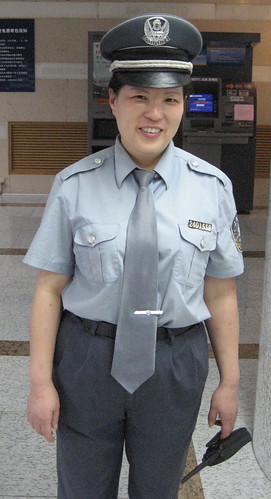Another sign of Korea’s increasing sense of insecurity in the face of rapidly growing Chinese economic and political power, or another sign of China’s aggressive attitude toward Korean cultural heritage, designed to assert cultural hegemony and keep its ethnic minorities in check? This time the Chinese have apparently got their sights on Taekwondo:
Concern is rising among Korean officials that China might try to assert taekwondo as its own homegrown sport.
Ko Eui-min, chairman of the World Taekwondo Federation Technical Committee, said, “China is doubted to have been adopting its Northeast Asia Project in taekwondo.”
Northeast Asia Project is an attempt to distort ancient Korean history in the northeastern territory of what is now China, including the Koguryo Kingdom (37 B.C.-A.D. 668) and the Palhae Kingdom (698-926).
“I was really upset to hear that the broadcaster at Changping Stadium in Beijing said taekwondo is a Chinese martial art, during the 2007 World Taekwondo Federation (WTF) Championships,” he said.
On the first day of the biennial competition, he introduced taekwondo, saying, “Taekwondo originated from Korea, combining Japanese and Chinese martial arts.”
The paradox is that Taekwondo is both a highly nationalistic subject in South Korea and perhaps Korea’s most well-recognised international cultural export. Can something like this be globalised and at the same time so firmly embedded in nationalistic discourse? The next paragraph in the above-linked article actually brought a wry smile to my face (my emphasis):
“I feel really sorry that we have not tried to protect taekwondo while China is preparing for the event. Although many renovations have been under way inside the taekwondo governing body after new leaders like the president and general secretary took office, we still have a lot of things to do,” said the 68-year-old taekwondo master, who resides in Germany.
It is a bit unfortunate that this blog hasn’t covered the whole Koguryŏ history controversy in much greater detail. Fortunately though, the subject has produced plenty of good English-language commentary over the last six months or so. The stand out examples are Andrei Lankov’s piece at Japan Focus; Yonson Ahn’s article at History News Network; Andrew Leonard’s introduction at Salon.com; and Choe Sang-hun in the International Herald Tribune. If you still want some more, I’ve managed to collect a variety of related internet resources in my del.icio.us links tagged Koguryŏ.





